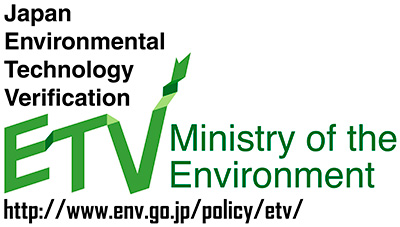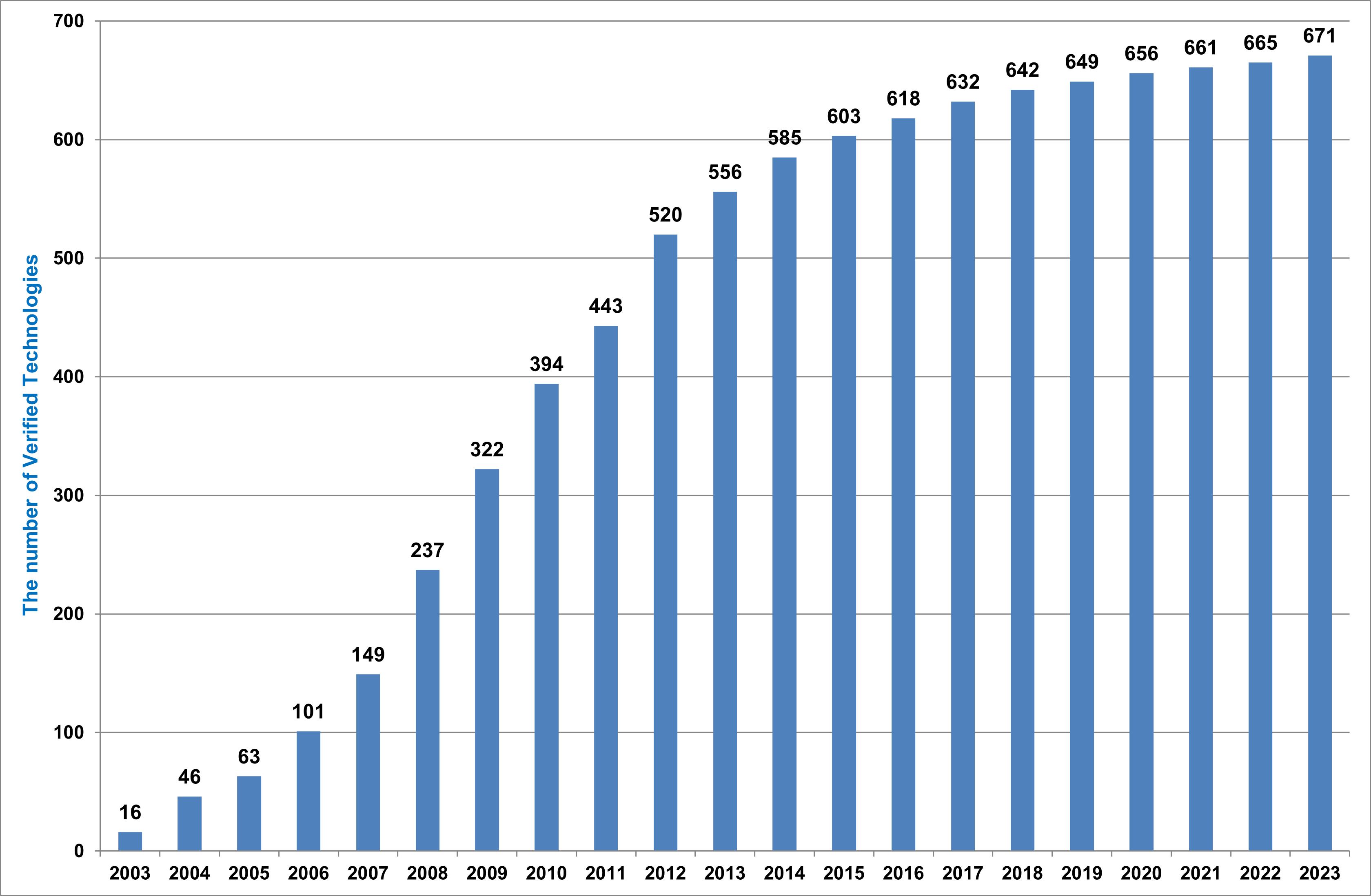

The effects on environmental conservation and improvement, secondary environmental impacts, and other important outcomes (environmental conservation effects, etc.) regarding advanced environmental technologies already in use are objectively verified by third-party organizations. This makes it easier for potential purchasers and introducers of environmental technologies to make appropriate choices, by making it possible to reference comparative studies of performance regarding environmental conservation and improvement. The purpose of the ETV program is to contribute to the development of the environmental industry, including the promotion of environmental technologies, contribution to environmental conservation and improvement, and the fostering of small and medium-sized businesses.
“Verification” means that a third-party organization that is neither a developer nor a user of environmental technologies shows the effects on environmental conservation and improvement of a certain environmental technology in the form of objective data based on tests. Environmental technologies are defined as advanced technologies that help improve or conserve the environment, or advanced measurement technologies related to the environment. “Verification” is different from “certification” in the sense that the latter involves the setting of certain criteria and the determination of conformity to such criteria.
A program to promote wider use of environmental technologies, in which reliable third-party organizations (verifier) verify environmental technologies at the sites where they are being used, and publicize the results.



671 technologies have been verified so far (as of the end of 2023)
The Verification Report is prepared by the verifier based on ISO 14034, and is a compilation of all verified results, including the following.
The report is approved by the Ministry of the Environment after it is reviewed by the Technology Verification Evaluation Committee that consists of experts.
● Overview
● Outline and purpose of the verification
● Contents of the verification
● Consideration of whether to include test data obtained in past investigations (if necessary)
● Test results
● Verification results based on test results
● Discussion of verification results
● Appendix: Glossary of terms, notes on quality control, etc. (if necessary)
The Verification Statement is a concise compilation of important verification results based on the Verification Report.